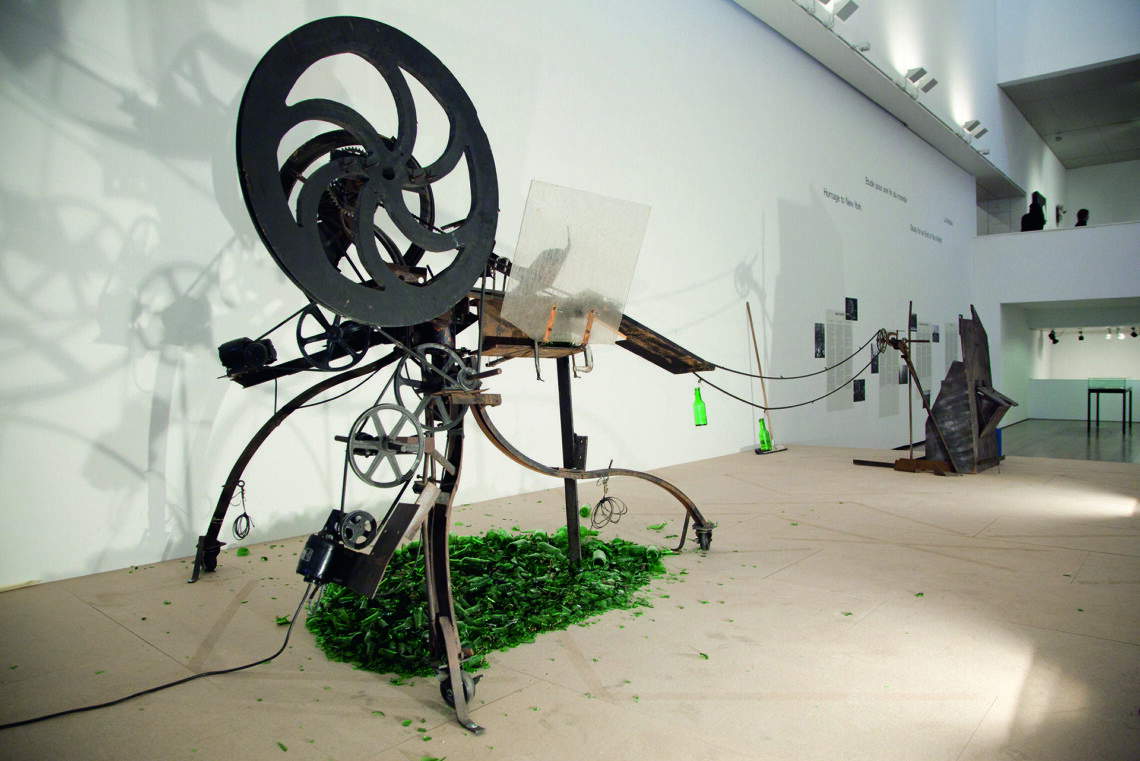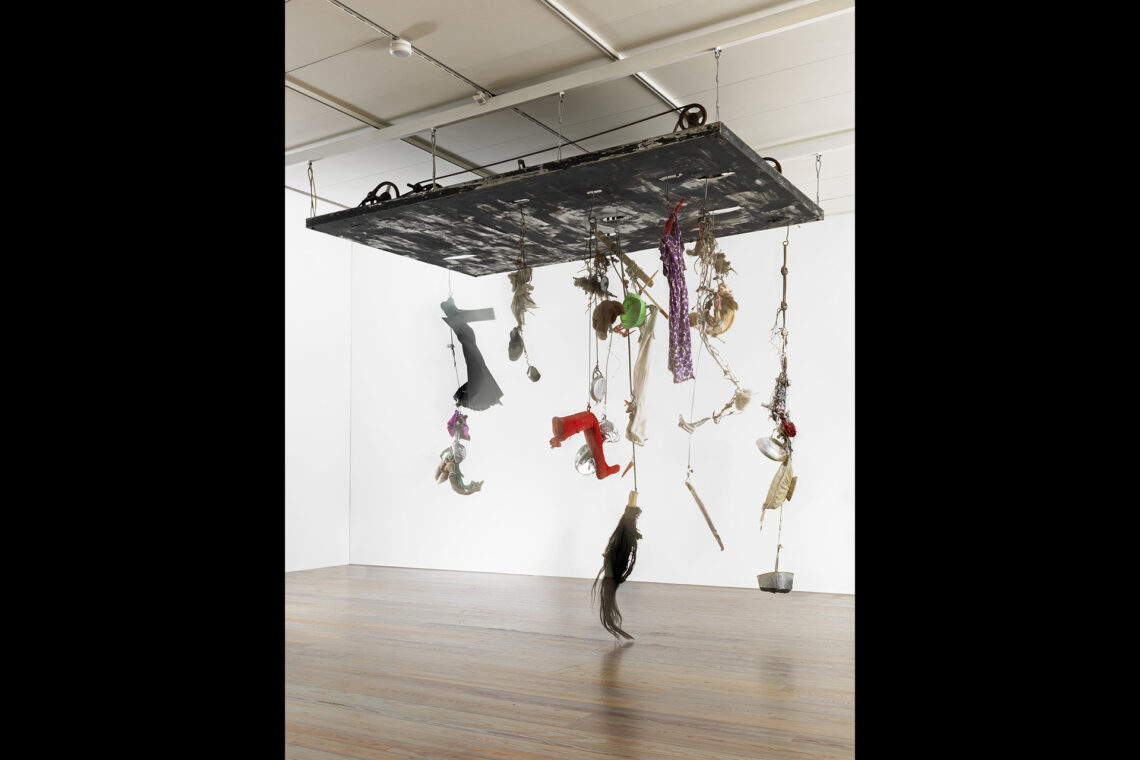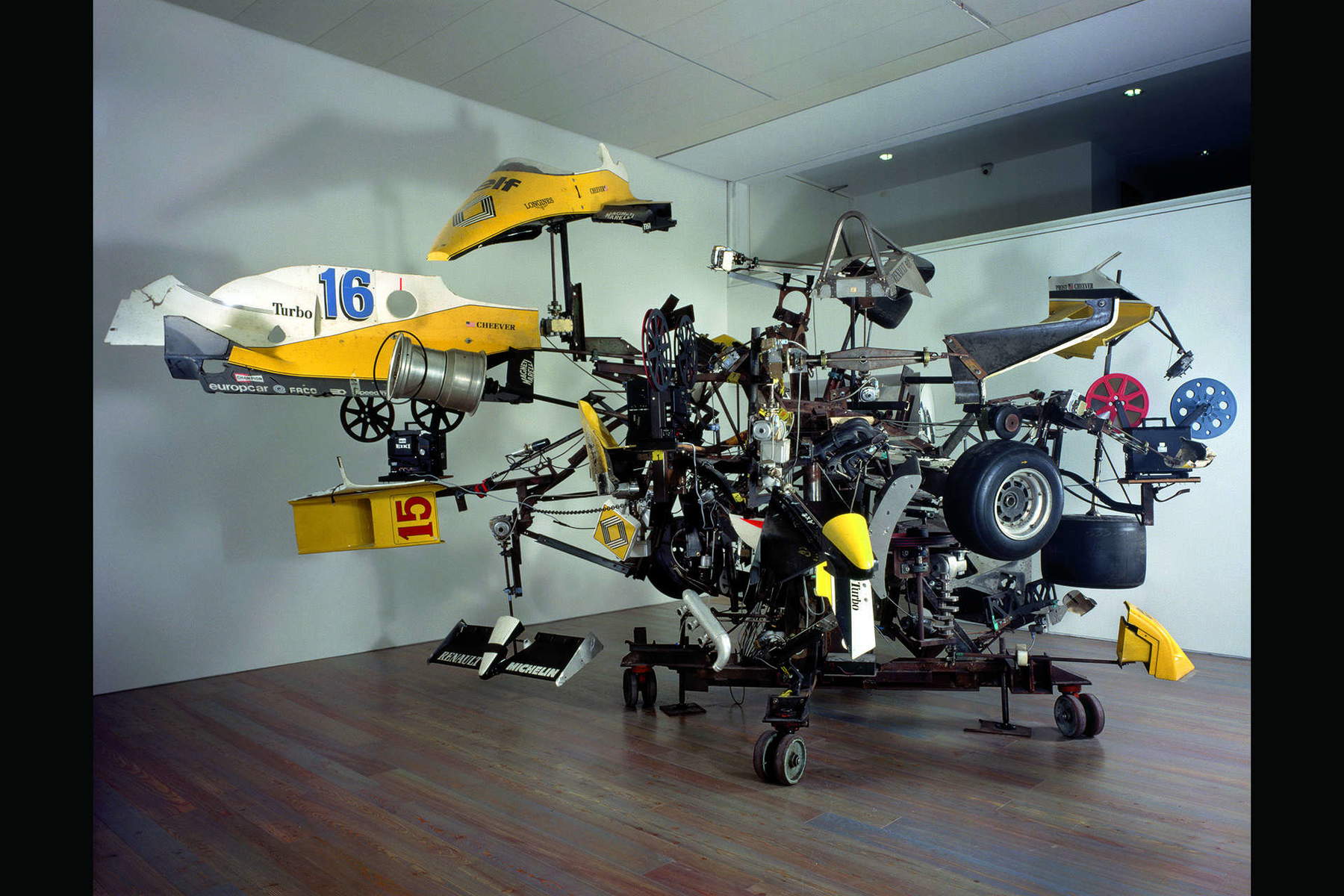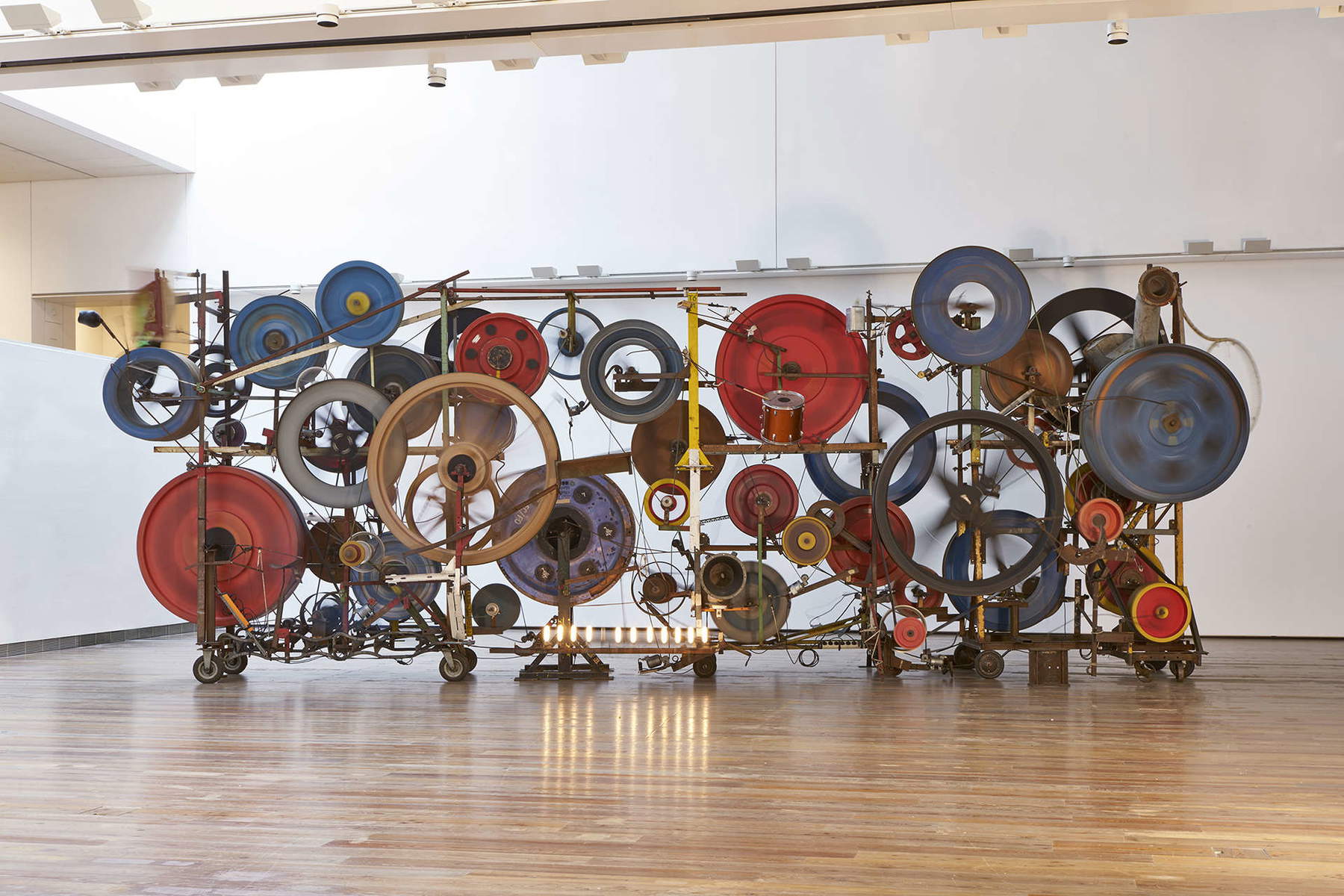Milan is preparing to celebrate Jean Tinguely (Fribourg, 1925 - Bern, 1991), one of the greatest pioneers of 20th-century art, with an extensive retrospective at Pirelli HangarBicocca. From Oct. 10, 2024 to Feb. 2, 2025, the exhibition, which will occupy nearly 5,000 square meters of the Naves, will offer the public the opportunity to admire more than thirty seminal works by the Swiss artist, created between the 1950s and the 1980s.
This retrospective, the most extensive ever held in Italy after his death, curated by Camille Morineau, Lucia Pesapane and Vicente Todolí with Fiammetta Griccioli, represents a unique tribute to Tinguely, whose last tribute in our country was in 1987, with the exhibition Una magia più forte della morte at Palazzo Grassi, curated by Pontus Hultén. The new exhibition project, realized in collaboration with the Museum Tinguely in Basel, is set in a particularly significant context: the industrial spaces of Pirelli HangarBicocca, which recall the original function of the machines at the center of Tinguely’s artistic universe.
The works on display, from kinetic sculptures to sound and visual installations, will transform the former industrial plant into a veritable atelier-factory, evoking the artist’s working environment in La Verrerie, in the canton of Fribourg. Between gears, wheels and motors, Tinguely’s machines come to life, freeing themselves from the tyranny of utility to embrace the unexpected and ephemeral. Works such as 1961’s Ballet des pauvres , 1967’s Rotozaza , 1984’s Pit-Stop , 1988’s Jean-Jacques Rousseau , and 1985’s Méta-Harmonie IV will be on view.
The exhibition will also reflect Tinguely’s deep connection with Milan, the city where he created some of his most ambitious works, such as the memorable performance La Vittoria in Piazza Duomo in 1970. Visitors will thus have the opportunity to immerse themselves in a unique sensory experience, where noises, sounds and colors come together in an extraordinary setting.
Jean Tinguely, known for revolutionizing the very concept of a work of art, was one of the leading exponents ofkinetic art, a movement that blended art and technology while actively involving the public. His machines, built from discarded objects and industrial materials, not only work but live, with a continuous and unpredictable movement that reflects his artistic vision. Tinguely has been the subject of exhibitions in some of the most prestigious international institutions, including: Kunstpalast, Düsseldorf (2016); Stedelijk Museum, Amsterdam (2016, 1984, 1973); Centro Cultural Borges, Buenos Aires (2012); Henie Onstad Art Centre, Oslo (2009); Institut Valencià d’Art Modern (2008); Kunst Haus Wien (2008, 1991); Kunsthal Rotterdam (2007); Stadtgalerie Klagenfurt, Klagenfurt am Wörthersee, Austria (2003); Städtische Kunsthalle, Mannheim, Germany (2002); Musée Picasso, Antibes (1999); Museum für Kunst und Geschichte, Freiburg (1991); Central House of the Artist, Moscow (1990); Centre Pompidou, Paris (1988); Palazzo Grassi, Venice (1987); Louisiana Museum, Humlebaek, Denmark (1986, 1973, 1961); Museum of Modern art of Shiga, Japan (1984); Musée Rath, Geneva (1983); Palais des Beaux-Arts, Brussels, Tate Gallery, London, Kunsthaus, Zurich (1982); Wilhelm Lehmbruck Museum, Duisburg, Germany (1978); Kunstmuseum Basel (1976, 1972); Museum of Modern Art, New York, (1975, 1961); Moderna Museet, Stockholm (1972, 1966); Centre National d’Art Contemporain, Paris (1971); Museum of Contemporary Art, Chicago (1968); Dayton Art Institute, Ohio (1966); The Museum of Fine Arts, Houston (1965); Kunsthalle, Baden-Baden, Germany (1964).
The artist’s works have also been included in numerous festivals and group exhibitions, such as Biennale de la sculpture, Yonne, France (1991); Biennale Monumenta, Middelheim, Antwerp (1987); Biennale de Paris (1982); documenta, Kassel (1968); Expo - International and Universal Exposition, Montréal (1967); Expo - Exposition Nationale Suisse, Lausanne (1964); Biennale di Venezia (1964); Salon de Mai, Musée d’Art Moderne de la Ville de Paris (1966, 1964). What’s more, the artist inspired the creation of the Museum Tinguely in Basel, opened in 1996, which houses the largest collection of his work, much of it donated by Niki de Saint Phalle.
The Milan retrospective is therefore an important appointment for those who wish to discover or rediscover the poetic and visionary universe of Jean Tinguely, an artist who was able to see poetry and beauty even in the noise and movement of machines.




 |
| Jean Tinguely on show in Milan: Italy's largest retrospective since his death |
Warning: the translation into English of the original Italian article was created using automatic tools. We undertake to review all articles, but we do not guarantee the total absence of inaccuracies in the translation due to the program. You can find the original by clicking on the ITA button. If you find any mistake,please contact us.